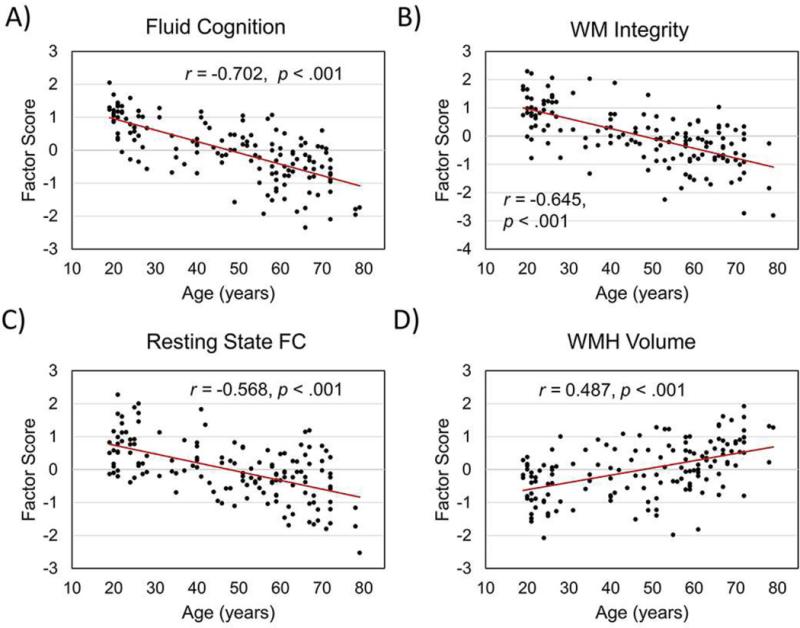
Age-related decline in fluid cognition can be characterized as a disconnection among specific brain structures, leading to a decline in functional efficiency. The potential sources of disconnection, however, are unclear. We investigated imaging measures of cerebral white-matter integrity, resting-state functional connectivity, and white-matter hyperintensity volume as mediators of the relation between age and fluid cognition, in 145 healthy, community-dwelling adults 19-79 years of age. At a general level of analysis, with a single composite measure of fluid cognition and single measures of each of the 3 imaging modalities, age exhibited an independent influence on the cognitive and imaging measures, and the imaging variables did not mediate the age-cognition relation. At a more specific level of analysis, resting-state functional connectivity of sensorimotor networks was a significant mediator of the age-related decline in executive function. These findings suggest that different levels of analysis lead to different models of neurocognitive disconnection, and that resting-state functional connectivity, in particular, may contribute to age-related decline in executive function.
Citation: Madden, D. J., Parks, E. L., Tallman, C. W., Boylan, M. A., Hoagey, D. A., Cocjin, S. B., Packard, L. E., Johnson, M. A., Chou, Y. H., Potter, G. G., Chen, N. K., Siciliano, R. E., Monge, Z. A., Honig, J. A., & Diaz, M. T. (2017). Sources of disconnection in neurocognitive aging: cerebral white-matter integrity, resting-state functional connectivity, and white-matter hyperintensity volume. Neurobiology of aging, 54, 199–213. https://doi.org/10.1016/j.neurobiolaging.2017.01.027
